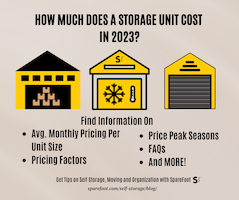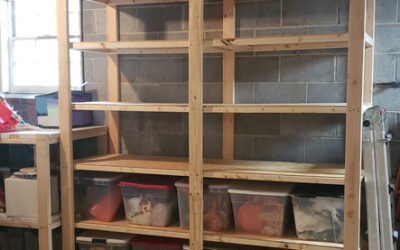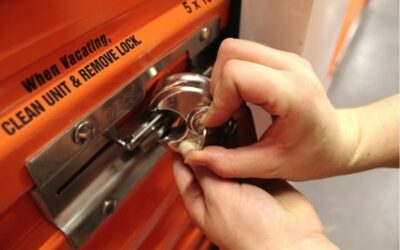When preparing for a big move, the difference between a chaos-filled day and a smooth transition often comes down to one crucial factor — the packing supplies you use. Yes, we are talking about those unassuming heroes: boxes, bubble wrap, tape and more. The right materials not only safeguard your valuables but also bring order amidst the moving whirlwind.
This guide will unravel the each of the following packing essentials for moving and introduce you to the best moving supplies on the market, ensuring your move is as streamlined as possible:
- Boxes
- Packing tape and dispensers
- Bubble wrap and packing paper
- Plastic stretch wrap
- Mattress protectors
- Labels and markers
- Moving blankets and furniture pads
- Moving straps and tie-downs
- Scissors and box cutters
- Miscellaneous supplies
Moving Boxes
When it comes to planning a successful move, boxes hold the fort. The importance of sturdy and durable moving boxes can’t be overstated.
Cardboard moving boxes are your typical packing and moving choice. You can purchase good quality packing boxes at most self storage facilities or retail stores. Finding free moving boxes is fairly easy and a budget friendly option.
Box matters and various sizes – small, medium and large — cater to different packing needs.
- Small moving boxes are great for heavier items like books, silverware, tools and canned goods.
- Medium moving boxes are ideal for a mix of items such as pots and pans, stereo equipment, toys, small appliances and lampshades.
- Large moving boxes come in handy for lighter, bulky items like pillows, bedding and more.
- Wardrobe boxes are great for moving clothes that should remain on hangers, like dresses, suits and coats.
As you assemble your packing supplies, keep the Goldilocks principle in mind: not too flimsy, not too robust, but just right. When packing, fill the boxes completely, using packing paper, towels or linens to fill empty space to prevent items from shifting.
Plastic moving boxes are a sturdy and environmentally friendly alternative to cardboard, which can be reused indefinitely by movers again and again. Not only are they stronger, but they eliminate the need for packing tape – another environmentally friendly reason to use them. Reusable plastic moving boxes are available from U-Haul and other local moving companies near you.
Packing Tape and Dispensers
Moving boxes are the structure, but packing tape is the glue that holds your packing and moving process together. It is important to choose high-quality, durable tape to securely seal your boxes and shield your belongings.
The tape type matters, and among the varieties of packing and moving tape available, acrylic and reinforced packing tapes offer reliable choices.
- Look for storage packaging tape or shipping tape for your move, which are designed for longevity.
- For heavier boxes, reinforced tape provides extra strength and endurance.
- Avoid shipping tape for long-term storage as it may not hold up over time.
Beyond the tape itself, a reliable tape dispenser is your secret weapon. It not only simplifies the sealing process but also ensures a uniform application and reduces strain on your hands.
Bubble Wrap and Packing Paper
Bubble wrap is perfect for cushioning fragile treasures, though its use should be limited to the truly delicate items such as your fine china, expensive glasses and irreplaceable knick knacks that can easily break.
Packing paper is essentially clean, white or brown newsprint that keeps your items ink-free and is more environmentally friendly method for wrapping and packing dishes, glassware and other delicate or smaller items. Packing paper is also cheaper than bubble wrap.
Pro Tip: For packing on a budget, newspaper is a good alternative to packing paper and bubble wrap. However, it isn’t the best choice for wrapping your expensive collectables as the ink from the newspaper could bleed and transfer to your items.
Plastic Stretch Wrap
Plastic stretch wrap looks and feels like Saran wrap, and comes in different widths. It is good for wrapping dressers up to protect from scratches, hold down furniture pads and prevent drawers from flying open. You can even just leave everything in the drawers if you’re going to stretch-wrap the whole dresser (unless it’s too heavy). Stretch wrap cutlery trays, utensil trays, and even makeup trays to keep loose items contained and just unwrap it, and stick it back into your drawer in the new place.
Plastic wrap can protect against moisture and dust. When using this, make sure to tightly wrap and cover the entire item. Remember, the aim is to provide a protective layer against possible mishaps during the move.
Mattress Bags
Large items such as mattresses can be susceptible to damage during transit, so protective covers, also known as mattress bags, are part of your moving must-haves. A mattress bag can prevent scratches, tears and stains, ensuring your mattress arrives in the same condition they left. These are also a must have when storing your mattress.
Labels and Markers
Labeling your boxes goes a long way toward an organized and hassle-free move. The simple act of using markers to write clear and legible labels is one of the packing essentials for moving that can transform the unpacking process, making it less of a guessing game and more of an efficient assembly line.
- Using a king-size Sharpie will ensure your labels are easily visible.
- Mark boxes containing delicate items with a bold “FRAGILE”
- Don’t forget to draw arrows indicating the correct orientation of the box.
Room labeling, along with a brief description of the content, can help the movers (and you) place the boxes in the right spot from the get-go, speeding up the unpacking process. Here are some free, color-coded moving labels that you can print and tape to your boxes.
Moving Blankets and Furniture Pads
Moving blankets, also known as furniture pads, are among the best moving supplies for keeping your furniture and other large, fragile items safe from scratches and dents. Here are some key points to keep in mind:
- If you are using professional movers, they usually provide these blankets. However, if you are going the DIY route and rent a moving truck, consider renting them or substituting them with large blankets from home, like comforters or beach towels.
- Should you prefer to buy your own moving blankets due to hygiene concerns, that’s a viable option too.
- Once you’ve draped your furniture in a blanket, secure it by wrapping plastic stretch wrap around both the furniture and the blanket. This ensures maximum protection during the move.
Moving Straps and Tie-Downs
Securing your heavy items properly is crucial, and that’s where moving straps and tie-downs come in.
- Moving straps are vital for ensuring a safe lift and transport of heavy items. They distribute the weight evenly, reducing the risk of injury. Remember to bend at your knees, not your waist, to prevent strain when lifting with moving straps.
- Tie-downs provide additional security, preventing items from shifting during transport. Make sure you loop the tie-downs through solid points of the item and pull tight to secure.
Remember, a well-secured item not only protects the item itself but also everything else in the moving truck.
Box Cutters or Scissors
Every unpacking process requires a reliable tool to cut through the boxes and bubble wrap. A box cutter or a pair of scissors will do just the trick, allowing you to efficiently and safely access your belongings.
Retractable plastic box cutters are safe and handy, especially during the constant movement of packing and unpacking.
Miscellaneous Moving Supplies
When it comes to organizing a successful move, a few additional cheap packing supplies can go a long way:
- Trash bags: Great for decluttering as you pack. The bulkier items that don’t fit in a box can be moved in a trash bag to keep them covered and clean during the move.
- Ziploc Bags: Ideal for keeping small items like screws, brackets, batteries and other hardware together. They are transparent, which allows you to quickly identify the contents.
- Twist Ties: These are excellent for organizing cables and wires, ensuring they don’t become a tangled mess during transit.
- Rubber Bands: Useful for bundling items together, such as kitchen utensils or pens and pencils.
- Notepad or Inventory List: Keeping track of what’s packed and where it is packed can make unpacking significantly easier.
- Permanent Markers: Aside from labeling boxes, they can also be used for marking zip lock bags or adding notes to your inventory list.
Remember, an organized move is a smooth move. These little tools can have a big impact on your moving day efficiency.
Round Up Your Moving Supplies Checklist
The right packing supplies truly make a world of difference when moving. Boxes, packing tape, bubble wrap, packing paper, protective covers, labels, markers, moving blankets, furniture pads, moving straps, tie-downs, box cutters and a plethora of miscellaneous supplies — each plays a vital role in ensuring a smooth, organized and stress-free move.
Starting with a comprehensive list of necessary packing materials allows you to approach the packing process with confidence and strategy. High-quality materials, though seemingly mundane, are your best defense against the common headaches of moving — damaged belongings, misplaced items and inefficiency.
Remember, moving isn’t just about transporting belongings from point A to point B; it’s also about protecting your valuables and ensuring an effortless unpacking process. Using the right packing materials can help facilitate this. As you prepare for your move, be sure to gather all necessary supplies and embark on your packing journey fully equipped.


